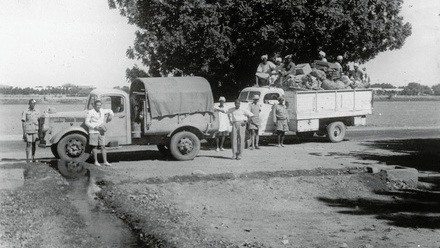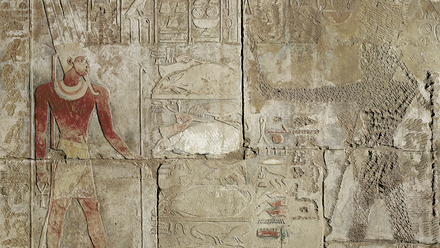Lord Carnarvon: More than just a benefactor
As the world awaits the next dramatic retelling of the discovery of the boy-king, Tutankhamun, we thought it was about time to do a little digging in our archives to uncover the relationship between Lord Carnarvon and the Egypt Exploration Fund during those exciting years. Yes, not the 'lust-in-the-dust' scenario that ITV are planning for their four-part drama, but possibly some research that could change the way that Lord Carnarvon is portrayed as part of the dynamic discovering duo of himself and Howard Carter – not least due to the current reports of what to expect of Lord Carnarvon in the show: http://www.dailymail.co.uk/news/article-3805960/ITV-drama-featuring-fictitious-love-affair-Tutankhamun-s-tomb-upsets-Egypt-adventurer-s-great-grandson.html
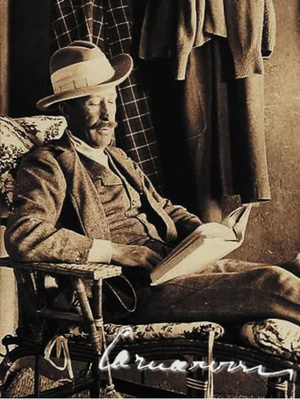
Left: George Edward Stanhope Molyneux Herbert, 5th Earl of Carnarvon (26 June 1866 – 5 April 1923). Image from Wikipedia, autograph taken from the Society’s archives.
Of course, it wouldn’t be fair if we didn’t (once again) lay claim to the fact that it was us, the Egypt Exploration Fund (Society), that put Carter on his path to fame and glory employing him at the young age of 16 to record the ancient painted decoration in the tombs of Beni Hasan as part of our Archaeological Survey of Egypt. His later work for the Fund at Deir el-Bersha and Deir el-Bahari also deserves a mention and the Society’s collection of Carter watercolours has recently been made available online here. One of the youngest archaeologists working for the Fund, Carter received training from Percy Newberry (who later helped Carter at the tomb of Tutankhamun) and Flinders Petrie himself. After leaving the Fund, Carter went on to have a career in the Antiquities Service and, after an infamous fall-out with a group of French tourists, eventually went on to benefit from the benefaction of Lord Carnarvon. But Carnarvon also had relations with the Egypt Exploration Fund, and continued to maintain this relationship despite the media frenzy during the discovery of KV62.
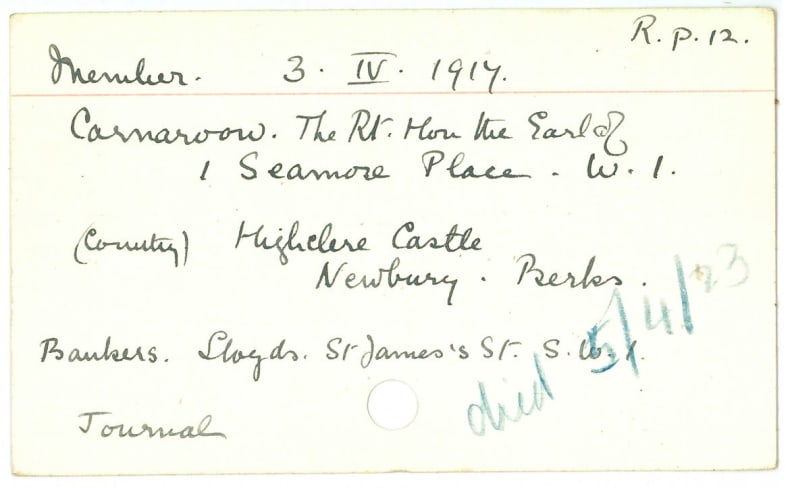
Lord Carnarvon’s membership record for the EEF documenting the date at which he joined the Fund and his untimely death.
The Right Honourable Earl of Carnarvon joined the Egypt Exploration Fund back on 3rd April 1917 and was immediately elected a Vice-President of the Society to replace Archibald Henry Sayce whose term had ended. His nomination features in the Society’s Annual Report for 1916-17 where he was elected into his post by the members present.
Lord Carnarvon regularly attended Committee meetings, often chairing them. He was instrumental in the reorganisation of the Egypt Exploration Fund in 1919 and its subsequent name change, to the Egypt Exploration Society, which was proposed by Lord Carnarvon at a Committee meeting on Tuesday 6th May 1919:
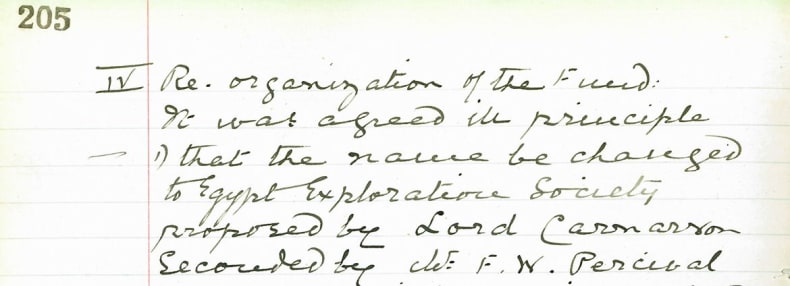
In his role on the Society’s committees, Lord Carnarvon approved fieldwork at sites such as Abydos and Amarna. He was responsible for attracting new members to the Society, long before his famous discovery, and for raising donations from among those in his elite circle. He persuaded other members to spread the word of the Society in order to build subscriber numbers and raise awareness of Egypt’s past. When the Society required funds to maintain its premises, Carnarvon donated the (at the time) substantial sum of £100 to ensure its longevity and survival during a period of financial insecurity.
His final gift to the Society was the discovery of the tomb of Tutankhamun – which could not have happened without his financial backing of Howard Carter. Though the EES had little involvement in the discovery of the boy-king’s burial, the public thirst for knowledge following it attracted hundreds of new members, donor and supporters to the Fund. In a period of economic struggle following the Great War, this provided a life-line for the EES that meant it could continue important excavations at Amarna and Abydos, eventually initiating the epigraphic survey of the temple of Seti I (see details of our upcoming study day).
His untimely and sudden death on 5th April 1923 was met with wide-spread public speculation of mysterious curses. The Society marked the loss of its Vice-President in a rather more subdued and respectful way in the Annual Report for 1922:
‘Lord Carnarvon has made for himself, by his discovery, a name imperishable in the annals of Egyptian Archaeology. The discovery was a worthy climax to his hard work with Mr Carter, in success and unsuccess, in hope and in disappointment, of sixteen years in the necropolis of ancient Thebes.’
They later reflect:
‘The Society owes a very special debt of gratitude to Lord Carnarvon, who always took such a keen interest in its work, especially that at Amarna, and expressed his interest by active solicitude on its behalf to the last, even when he can have found little time to spare from the work on Tutankhamen’s tomb. Lord Carnarvon’s name will always be remembered by the Egypt Exploration Society as that of one of its greatest well-wishers and helpers and one of its most active Vice-Presidents.’
Sentiments that remain true to this day.
Further records relating to Lord Carnarvon, Howard Carter and the discovery of Tutankhamun are preserved at the Griffith Institute archives, Oxford: http://www.griffith.ox.ac.uk/
We heartily recommend their Anatomy of an Excavation section to anyone interested in the tomb of Tutankhamun!
But we haven't made our minds up on the upcoming ITV drama yet though... We'll have to wait to find out.

